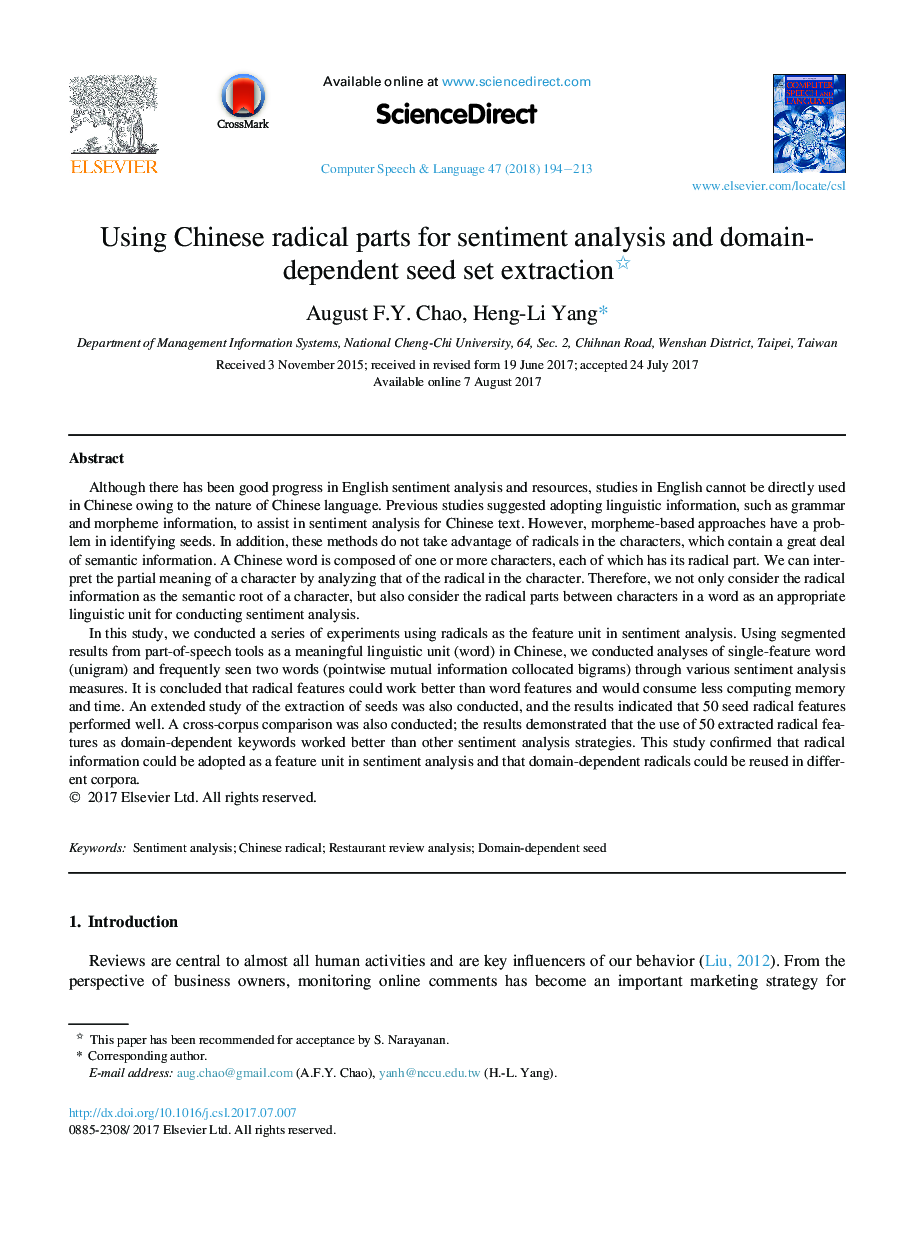| کد مقاله | کد نشریه | سال انتشار | مقاله انگلیسی | نسخه تمام متن |
|---|---|---|---|---|
| 4973646 | 1451680 | 2018 | 20 صفحه PDF | دانلود رایگان |
- This study adopted Chinese radical information for sentiment feature extraction.
- We conducted sentiment analysis by radical representation both in unigram and bigram.
- We developed a domain-depended radical feature extraction method.
- A comparison also conducted, and results show radical-based better than word-based.
Although there has been good progress in English sentiment analysis and resources, studies in English cannot be directly used in Chinese owing to the nature of Chinese language. Previous studies suggested adopting linguistic information, such as grammar and morpheme information, to assist in sentiment analysis for Chinese text. However, morpheme-based approaches have a problem in identifying seeds. In addition, these methods do not take advantage of radicals in the characters, which contain a great deal of semantic information. A Chinese word is composed of one or more characters, each of which has its radical part. We can interpret the partial meaning of a character by analyzing that of the radical in the character. Therefore, we not only consider the radical information as the semantic root of a character, but also consider the radical parts between characters in a word as an appropriate linguistic unit for conducting sentiment analysis.In this study, we conducted a series of experiments using radicals as the feature unit in sentiment analysis. Using segmented results from part-of-speech tools as a meaningful linguistic unit (word) in Chinese, we conducted analyses of single-feature word (unigram) and frequently seen two words (pointwise mutual information collocated bigrams) through various sentiment analysis measures. It is concluded that radical features could work better than word features and would consume less computing memory and time. An extended study of the extraction of seeds was also conducted, and the results indicated that 50 seed radical features performed well. A cross-corpus comparison was also conducted; the results demonstrated that the use of 50 extracted radical features as domain-dependent keywords worked better than other sentiment analysis strategies. This study confirmed that radical information could be adopted as a feature unit in sentiment analysis and that domain-dependent radicals could be reused in different corpora.
Journal: Computer Speech & Language - Volume 47, January 2018, Pages 194-213
